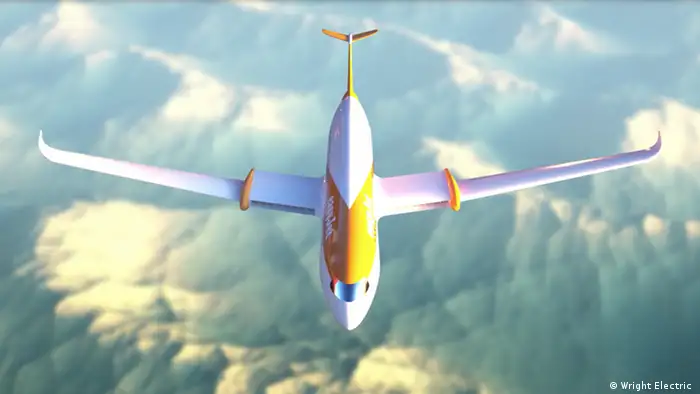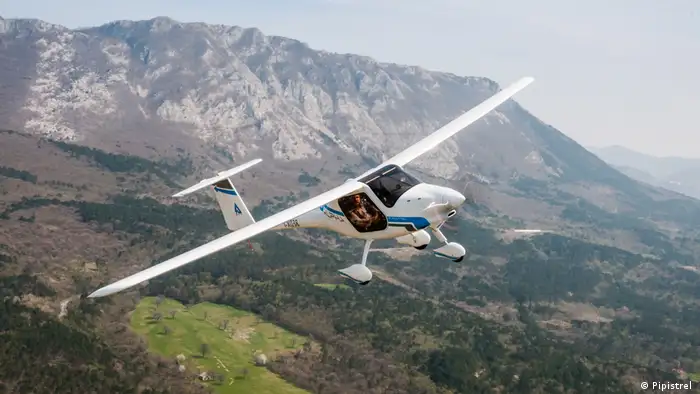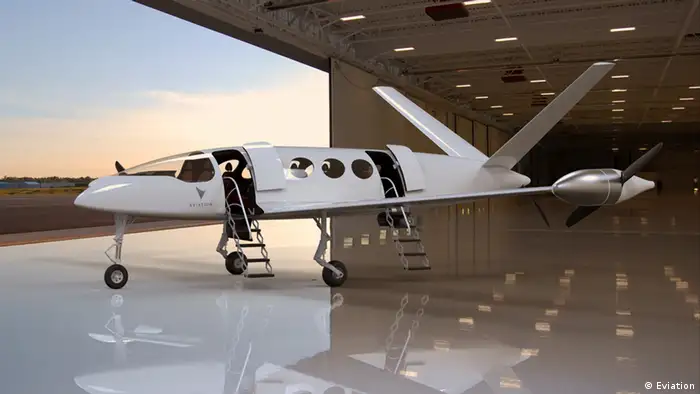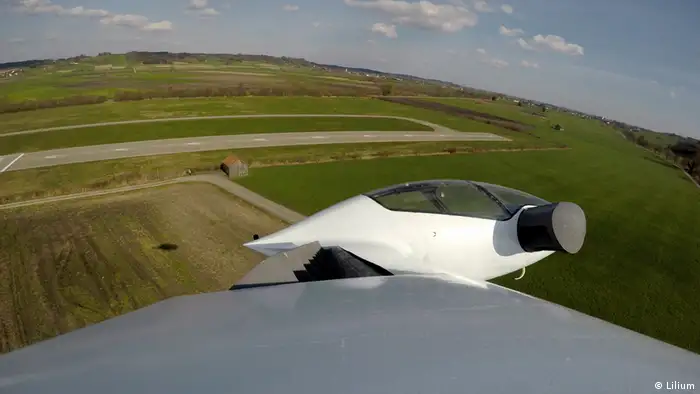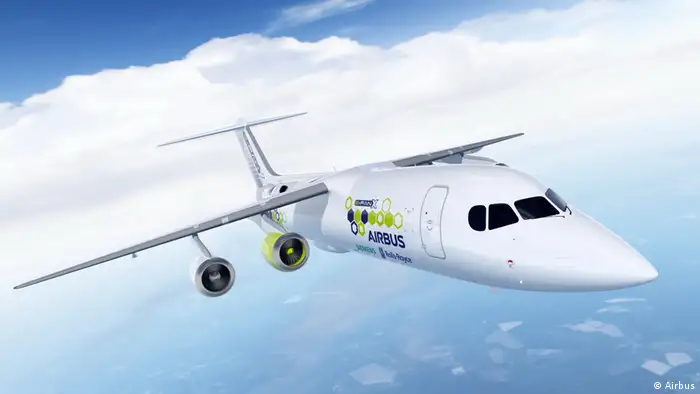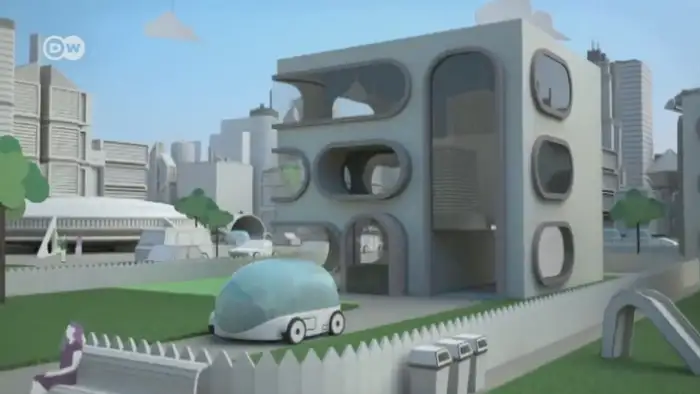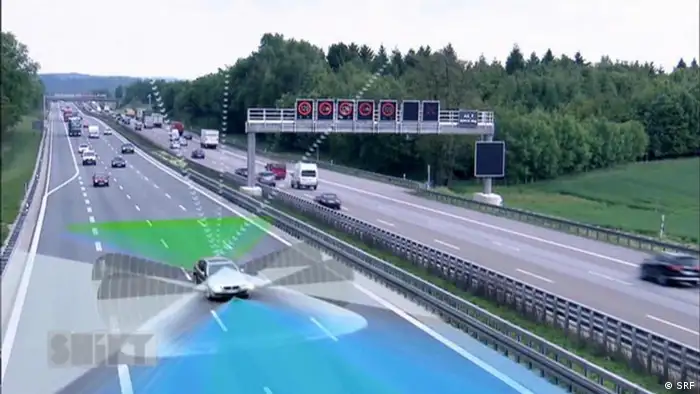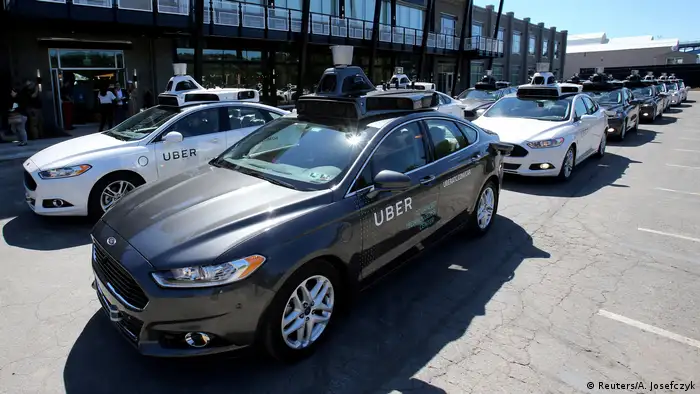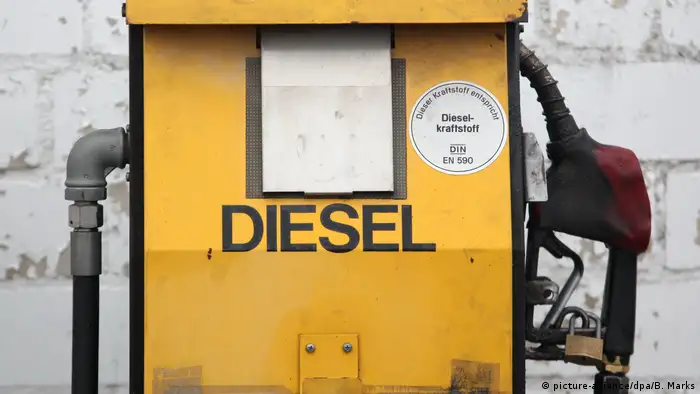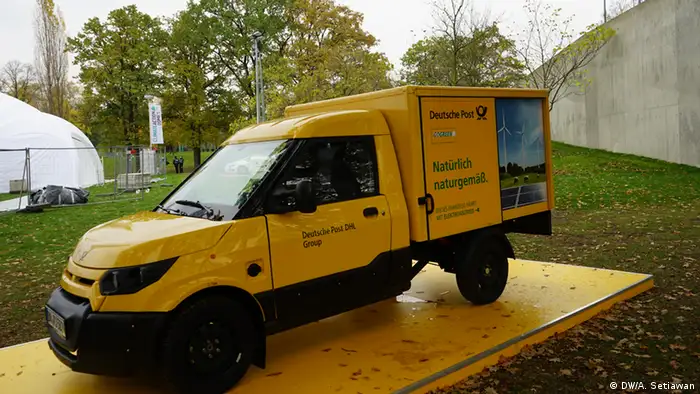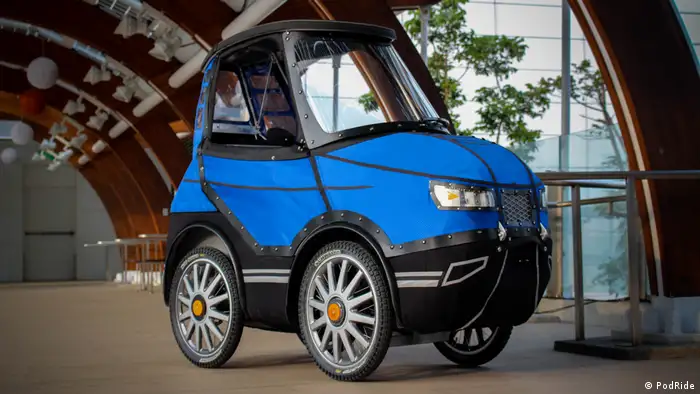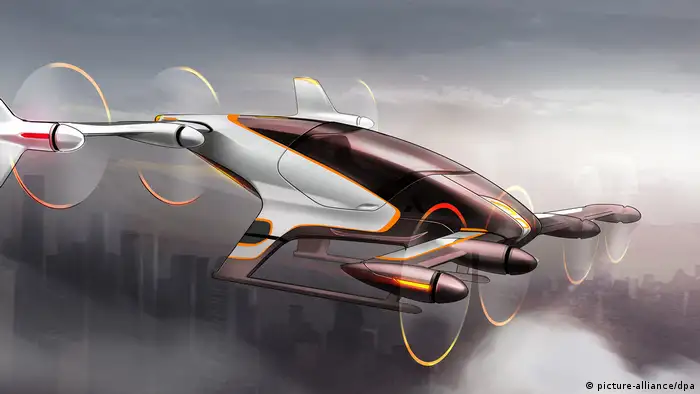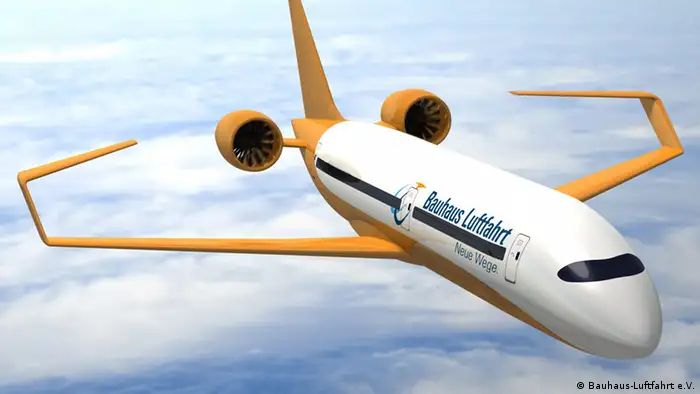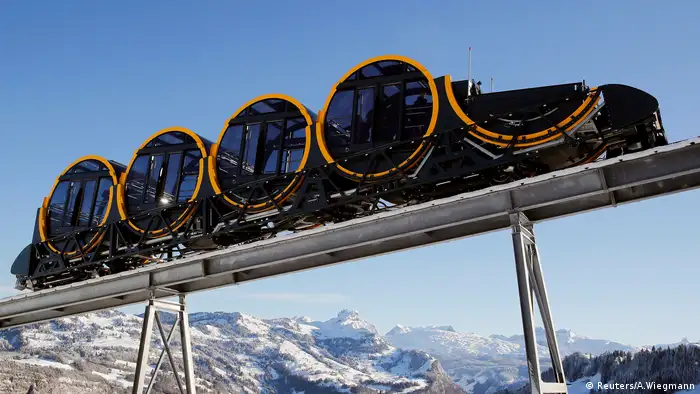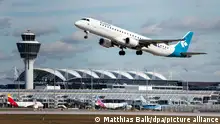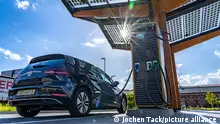Deutsche Welle: Professor Kallo, you are currently conducting research into planes powered by batteries rather than petroleum at the German Aerospace Center (DLR). When will we be able to travel in electric planes?
Josef Kallo: I would say in around 20 years. Electric flying makes the most sense for regional traveling — that is, for distances from 250 kilometers (155 miles) to a maximum of 2,000 kilometers (1,200 miles), since the range of battery-powered planes is only 60 percent of petroleum-powered ones.
We are already building prototypes, but will continue to further develop and certify models in the next 10 to 15 years. Electric flying is definitely possible from a technological viewpoint. Whether it will also be implemented, however, is a matter of investment.
How exactly would local transport with electric planes look like?
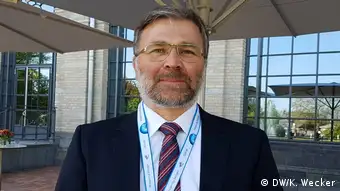
The future of local transport is aiming for the sky, says Josef Kallo
We could create small hubs for "air buses" with 10 to 12 seats, up to maybe 40 seats. Since electric planes are very quiet and only need a relatively short runway to take off and land, these hubs could be built close to cities. Passengers could book their journey with an app and decide whether they prefer taking the train or air bus, or a combination of both.
In Germany, the e-planes could connect rural areas where public transport isn't yet well-developed. In the state of Baden-Wuerttemberg, for example, you need three hours to get from Aalen to Freiburg by train. With an e-plane, this would take less than 45 minutes.
Do you see electric planes as an addition to or rather a replacement for local public transport?
Electric planes could be employed in areas that are not well-connected, without having to invest in infrastructure such as railroad tracks or highways. This concept could be useful for countries such as China or India, where you could relatively easily connect big areas to each other.
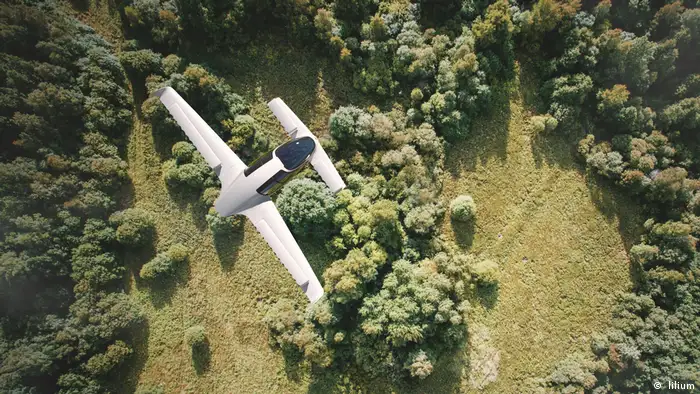
Electric planes like the Lilium flying taxi can take off vertically, and therefore require little infrastructure
We will also see the rise of mega-cities where ground-based transport such as buses and trains might not be able to operate flexibly enough. Here, electric planes could connect people and places without straining urban environments.
Speaking about the environment: How environmentally-friendly are electric planes? Today, CO2 is responsible for less than half of all flight-related emissions. Contrails, nitrogen oxide and particles are significant sources for global warming.
In total, electric planes will be 10 percent more efficient than traditional ones. The energy source — a battery with fuel cells or a gas-fueled turbine generator — can be separated from the electric engine, making the design more flexible. As a result, the entire system is more efficient. We need less energy for flying and will cause less emissions.
Furthermore, fuel cells don't emit any CO2, benzene, particles, nitrogen oxide, and so on. All in all, it would be more environmentally friendly. We can't say anything with respect to contrails yet, as we will need to run further experiments.
-
Environmentally friendly air travel? Electric planes of the future
Small, lightweight and emissions-free
Planes powered with renewable energy don't produce CO2 or other climate-damaging emissions such as nitrogen oxide and particles. They are smaller, lighter and more efficient than planes powered by kerosene. The Alpha Electro from the Slovenian start-up Pipistrel is already proving this since 2015, when it had its maiden flight.
-
Environmentally friendly air travel? Electric planes of the future
Hop on the flying bus
Most companies and scientists see the future of electric planes in regional transport. The Israeli start-up Eviation plans to revolutionize commuting with their nine-seater. The prototype Alice can fly for up to 650 miles (1,000 kilometers), and will take to the sky in 2019 for the first time, according to the company.
-
Environmentally friendly air travel? Electric planes of the future
Up, up and away
The flying taxi of the German company Lilium had its first successful flight in April 2017. The five-seater can take off and land vertically, has a reach of 190 miles and travels from London to Paris in just an hour. The goal of the company is for people to one day be able to order their flying cab via app for the price of a regular taxi ride.
-
Environmentally friendly air travel? Electric planes of the future
A mix of old and new
Some plane manufacturers don't dare go all-electric just yet. In November 2017, Airbus, Rolls-Royce and Siemens announced they will jointly develop a commercial hybrid-electric prototype. The e-Fan X will be powered by three gas turbines and one electric motor. The companies aim to replace a second gas turbine with another electric motor at a later stage. A prototype is anticipated to fly in 2020.
-
Environmentally friendly air travel? Electric planes of the future
Orange goes green
As part of British budget airliner EasyJet's plans to become more climate-friendly, it has entered into a cooperation with the United States startup Wright Electric. The goal is to develop a completely electric-powered plane for up to 150 passengers. It's not known yet when we can expect to see a first prototype.
-
Environmentally friendly air travel? Electric planes of the future
Electric future
Experts believe that we could be flying in electric planes within 20 years. Various prototypes companies are working on have a range of a 155 to 650 miles. But technology is developing at an ever-faster pace. Who knows? One day, we might be able to travel around the world in emission-free planes completely powered by renewable energy. There's hope for all environmentally conscious travel addicts!
Author: Katharina Wecker
Electric planes will, however, only be climate-friendly if they are powered with renewable energy. Will we be able to generate enough solar or wind energy for electric planes?
In Germany, the market regulates that we won't produce more energy than is actually needed. Therefore, we would need to create capacities for electric traffic concepts.
Technically, it would be possible. We can already see that some regions in Italy, Spain and in the American Southwest, so much solar and wind energy is generated that this can supply enough energy for electric flying in form of hydrogen electrolysis [production of hydrogen for fuel cells].
Companies like Boeing und Airbus are also experimenting with electric planes. Is there exchange between the science community and industry?
It's great that aircraft manufacturers are going into that direction. If we do our homework in the next two to three years, we might be able to collaborate, maybe develop a prototype together.
Josef Kallo works at the Institue of Engineering Thermodynamics at the German Aerospace Center (DLR) in Stuttgart. Since 2006, he leads the department "Electro-chemical systems — fuel cells and battery systems."
The interview was conducted by Katharina Wecker at the DLR Climate Change Conference in Cologne, Germany. Originally in German, the text has been translated, and condensed and edited for clarity.
-
Who even needs a car these days?
Welcome to the traffic jam!
Germans are as attached to their forms of transport as the English are to their monarchy. No wonder: Gottlieb Daimler invented the modern car; Nicolaus August Otto co-invented the internal combustion engine. Every child knows the brands Daimler, BMW, Audi and VW, and that motorways were first built in Germany. But transport systems will become greener and more flexible, traffic researchers say.
-
Who even needs a car these days?
The city of tomorrow
Since 2008, more people live in cities than in rural areas, and that trend is increasing. Urban zones will become CO2-neutral, climate-adapted, digitized and automated, Fraunhofer Morgenstadt Initiative researchers say. Networking will encourage more efficient means of transport, the sharing economy will catch on, mobility will become a service. No more need for your own car.
-
Who even needs a car these days?
Smart — the age of digitization
With worldwide networking possible via the internet, cities and traffic systems can be coordinated. This could mean automatically switching traffic lights according to the flow of vehicles. Sensors could transmit data and prevent vehicles from hitting each other, thus avoiding accidents. Servicing, maintenance, insurance and parking meters may become unnecessary.
-
Who even needs a car these days?
Traditionally safe versus digitally self-driving
Will Amazon, Google and others become the new carmakers and put the drivers in the back seat? Interesting question — although self-driving cars have recently been dealt a setback. Testing at US company Uber was suspended after a self-driving car ran over a woman by night.
-
Who even needs a car these days?
Goodbye to road rage?
Today the streets are clogged, lights are red, you're stuck in a traffic jam, going to miss that appointment. Car horns, anger, insults: that's stressful. But rage and provocation could become things of the past if self-driving cars become the norm. Then, passengers can sit back and laugh about the old days.
-
Who even needs a car these days?
The rise of the platform
Order your ride or taxi by app. Public and collective transport is increasingly being organized via the internet. You can even pay for the service through your smartphone.
-
Who even needs a car these days?
Discontinued model
The car's future is electric, that seems to be the consensus; the only question is, when? Despite investing billions into e-cars, there's a lack of options and sites for charging electric vehicles. Together with high costs, consumers are concerned. Alternatives to e-cars could fill the gap: fuel-electric hybrids, and other vehicles powered by hydrogen or synthetic fuels.
-
Who even needs a car these days?
Yellow goes green
Postal workers are climate-friendly when they deliver letters by foot or bike, but for parcels they need vehicles. Deutsche Post (DHL) and Aachen Technical University have invented the CO2-free StreetScooters, powered by renewable energy. One of the challenges of the future is to make sure the electricity used in electric vehicles is also climate-friendly.
-
Who even needs a car these days?
Jack of all trades
It looks a little like a Smart car, but it's actually an e-bike on four wheels. The Podride is 1.8 meters (6 feet) long and has a closed cab with a comfy seat. It travels file on snow and ice, it's heated, it can manage steep and uneven slopes, and there is even storage space. The driver steers by way of two levers at the seat and pedals to power the rear wheels with help from the electric motor.
-
Who even needs a car these days?
Autonomous flying car project
From many clever minds comes a clever idea. A dozen companies are developing personal aircraft. This rocket-like Vahana flying car prototype from Airbus is designed to beam a passenger along at 9,150 meters (30,000 feet) altitude, reaching speeds of 480 kilometers (298 miles) per hour. Battery swaps would be like Formula 1 pit stops: quick landings, and on you go.
-
Who even needs a car these days?
E-mobile in the air
The Bauhaus Luftfahrt association is developing an airport and aircraft concept. The Ce liner would be power by two electric engines with aerodynamically efficient C-shape wings. Inner-city airports of the future would be arranged over several levels to save on space, with lift-off from the top level and battery charging on lower floors.
-
Who even needs a car these days?
The steepest funicular in the world
The Swiss mountain village of Stoos boasts the steepest cable railway in the world. It rises up 744 meters in altitude as it travels 1.7 kilometers in just four minutes. The village has 150 permanent residents, but 2,000 hotel beds for visitors to come and enjoy the view in the car-free resort. Maybe someday the Himalayas will have a similar system?
-
Who even needs a car these days?
The mobility revolution is in full swing
Can you imagine the world without your own car? Until now, the car has represented prosperity and independence. But experts see mobility as becoming smart in the near future, with cars being used by multiple users and forming just one part of a range of mobility offerings.
Author: Karin Jäger


